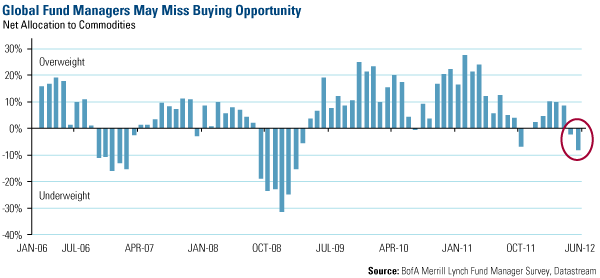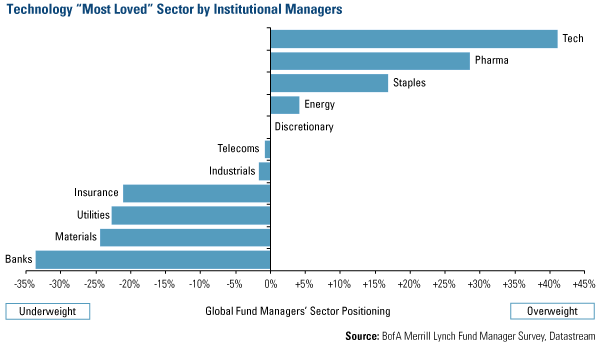Goldman Sachs recommends “stepping back into the markets” in its latest Commodity Watch. Goldman is anticipating a 29% return for the S&P GSCI Enhanced Commodity Index over the next 12 months and suggests investors might want to increase their position in commodities. Here’s why. Words: 755
Commodity Watch. Goldman is anticipating a 29% return for the S&P GSCI Enhanced Commodity Index over the next 12 months and suggests investors might want to increase their position in commodities. Here’s why. Words: 755
So says Frank Holmes (www.usfunds.com) in edited excerpts from his original article*.
Lorimer Wilson, editor of www.munKNEE.com (Your Key to Making Money!), has edited the article below for length and clarity – see Editor’s Note at the bottom of the page. This paragraph must be included in any article re-posting to avoid copyright infringement.
Holmes goes on to say, in part:
Cautious investors might note that this is a significant change compared to the storm we’ve been driving through over the past several months. Goldman bases its view on a number of compelling factors that reveal improved conditions:
1. Prices have been pushed below fair value. Commodities have underperformed all other assets, says Goldman. The U.S. Global investment team tracks numerous resources subsectors’ daily movements, and looking over the past 60 days, the Morgan Stanley Commodity Related Equity Index, as well as oil and gas, fertilizers, construction and engineering subsectors have experience double-digit declines, triggering a -1 sigma move. This is a sign that several commodities indices may be oversold; historically, these dips provided buying opportunities.
2. China and the U.S. have been posting improved data. Forward-looking data for U.S. survey data is more positive and China’s activity measures have been “in line with expectations,” says Goldman.
3. Policymakers are taking accommodative action. Recently, we’ve seen China cut interest rates for the first time since 2008. Australia and Brazil also cut rates, and Indonesia just introduced a stimulus plan to boost consumption and infrastructure spending, using $2.5 billion from the budget surplus to fund building projects as well as lift the tax-free annual income level, reports Bloomberg Businessweek. Some speculate that the U.S. might be next in making an easing move.
Central banks will do their best to provide liquidity to the banking system, says BCA Research. Recently, the Bank of England’s central bank has “taken the lead,” with total assets significantly accelerating after coming out with its own long-term refinancing operation (LTRO) program. England will provide six-month loans, as well as loans that are below market rates to banks for many years, to help drive lending to households and businesses.
Take Note: If you like what this site has to offer go here to receive Your Daily Intelligence Report with links to the latest articles posted on munKNEE.com. It’s FREE! An easy “unsubscribe” feature is provided should you decide to cancel at any time.
Don’t Miss the Entrance Ramp
Many institutional managers have exited the commodities superhighway in favor of cash—currently at the third highest level on record—or technology stocks. In its global fund manager survey this month, Bank of America-Merrill Lynch found that advisors’ allocation to commodities reached its lowest level since February 2009.

Instead of commodities, global managers are favoring technology. BofA-ML calls tech “the most loved sector by far,” with managers’ overweighting the sector an average of more than 40 percent. On the opposite side of the scale are basic materials and utilities sectors.

We’ve discussed this discrepancy in the market: While tech companies, such as Apple, cater to our wants, materials and utilities companies supply our needs. Global resources are needed to power the world: utilities recharge Apple’s iPhone, iPod and iPad, basic materials are needed to build the devices, and telecom companies keep us connected to loved ones.
Rather than veering in and out of sectors, there may be a better course for investors. Roger Gibson, one of the nation’s most influential voices on asset allocation, charted a hypothetical investment of a dollar from 1971 through 2011 in three different portfolios: one in U.S. stocks, represented by the S&P 500 Index, one in commodity-linked securities which is the S&P GSCI Commodity Index and one for a 50 percent allocation in each, rebalancing every year.
His math shows that a hypothetical $1 in U.S. stocks over 40 years would be worth $42.60. The dollar invested over that same time in commodity-linked securities would be worth $34.56. However, a 50 percent allocation in each investment would yield the most, making $58.31 after four decades.
Another way to take advantage of a potential upturn in commodities is by choosing dividend-paying global resources equities…. In the S&P 500 Index, nearly all of the materials and utilities stocks and more than half of energy companies pay a dividend that is higher than the 10-year Treasury. Materials and utilities companies yield an average of 2.3 percent and 4.1 percent, respectively, while energy stocks pay an average yield of 2.2 percent….
In today’s challenging economic environment, it’s wise for investors to stay the commodities course, recognize the difference between what’s in the windshield and the rear view mirror, and keep an eye on the road for unexpected obstacles.
*http://www.gotgoldreport.com/2012/06/speed-up-or-slow-downdont-exit-the-commodities-highway.html#more (To access the above article please copy the URL and paste it into your browser.)
Editor’s Note: The above article may have been edited ([ ]), abridged (…), and reformatted (including the title, some sub-titles and bold/italics emphases) for the sake of clarity and brevity to ensure a fast and easy read. The article’s views and conclusions are unaltered and no personal comments have been included to maintain the integrity of the original article.
Related Article:
1. Media Hysteria, Secret Cartels and the Long-term Trend in Commodities
The economic powerhouses (the secret Cartels that rule the world?) of Wall St., Bay Street and the City of London have sufficient capital to dramatically influence any market…and it is all made possible by the media [who] distort our understanding of longer term trends – and that is something to avoid if you want to be a successful investor. Let me explain. Words: 618
2. Goldman Sachs’ Leading Indicators Signal Steep Market Crash Ahead
Goldman Sachs reports their Global Economic Indicators (GLI) show the world has re-entered a contraction and…is predicting a market crash worse than that of the early 90′s recession and one slightly less than the sell-off at the turn of the millennium. [Below are graphs to support their contentions.] Words: 250
 munKNEE.com Your Key to Making Money
munKNEE.com Your Key to Making Money

